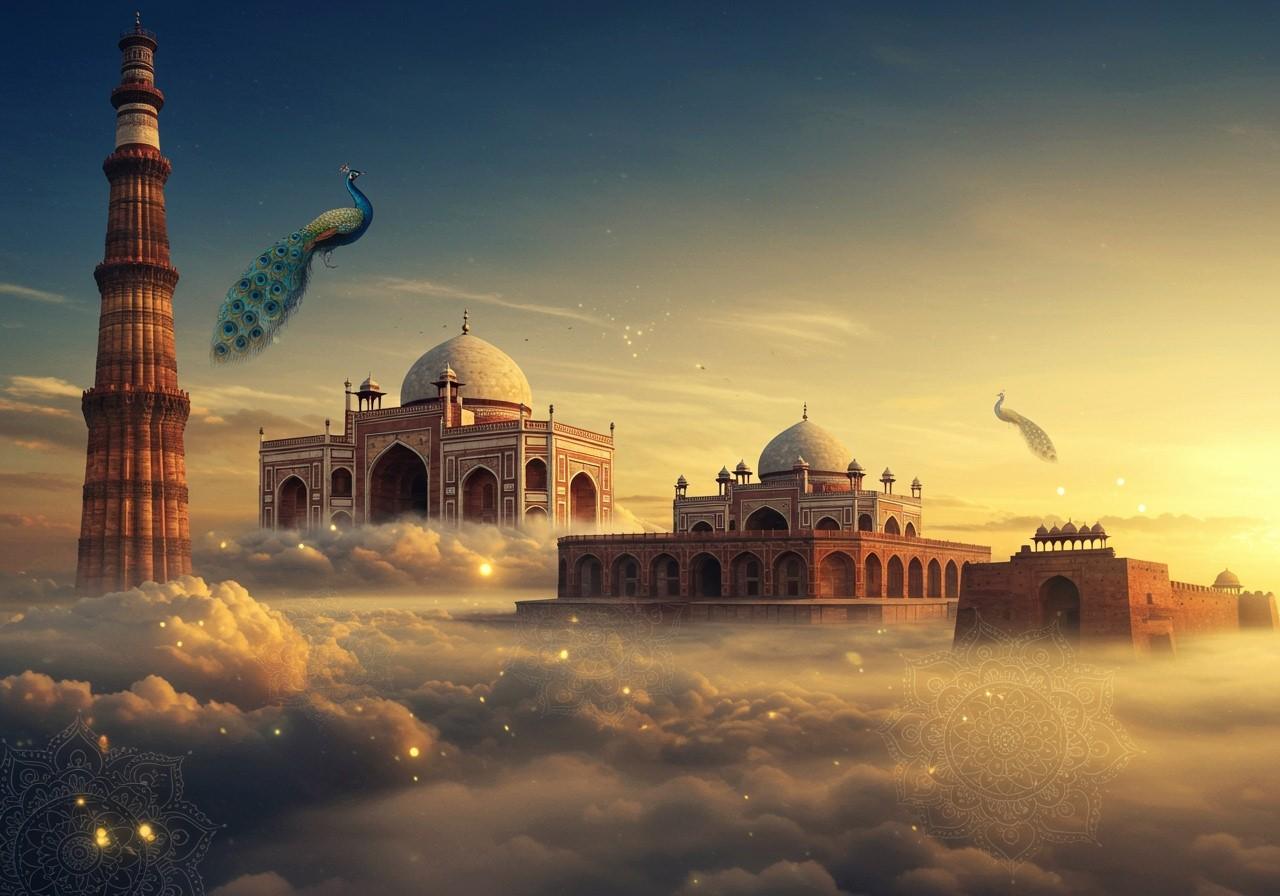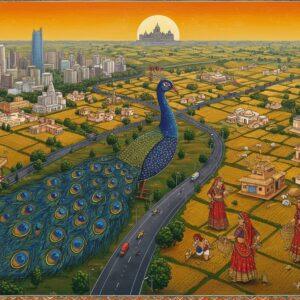
Embark on a captivating journey through Delhi, a city that beautifully blends history and culture with its architectural marvels. As India’s capital, Delhi stands as a testament to the country’s rich heritage, showcasing stunning examples of Mughal, British, and contemporary architecture. This article will guide you through the city’s iconic historical sites, highlighting their importance in Delhi’s cultural tapestry and offering insights into the stories they tell.
Red Fort (Lal Qila): A Symbol of Sovereignty
Discover the grandeur of the Red Fort, a UNESCO World Heritage Site and a symbol of India’s sovereignty. Built by Emperor Shah Jahan in the mid-17th century, this fort represents the pinnacle of Mughal architectural brilliance. Its red sandstone walls stretch over 2 kilometers, showcasing intricate design and artistry. Key structures within the fort complex include:
- Diwan-i-Aam (Hall of Public Audiences): This grand hall was used by the emperor to address his subjects and hear their petitions, showcasing the Mughal emperors’ connection to the people.
- Diwan-i-Khas (Hall of Private Audiences): Reserved for important meetings and discussions with dignitaries and advisors, this hall reflects the inner workings of the Mughal court and its political affairs.
These structures highlight the historical role of the Red Fort as the main residence of Mughal emperors. The annual Independence Day celebrations at the fort reinforce its status as a national symbol. The design reflects a fusion of Persian, Timurid, and Indian styles.
India Gate: A Tribute to Valor
Uncover the story behind India Gate, an iconic war memorial in Delhi’s heart, designed by Sir Edwin Lutyens. Built to honor soldiers of the British Indian Army who died in World War I, the gate is a poignant reminder of sacrifice and valor. The architectural style draws inspiration from the Arc de Triomphe in Paris. Key features include:
- Amar Jawan Jyoti: The eternal flame beneath the arch commemorates the Unknown Soldier, symbolizing the enduring memory of those who made the ultimate sacrifice.
- Inscriptions and Motifs: The names of soldiers and intricate carvings adorn the gate, narrating stories of valor and the historical context of their service.
India Gate serves as a central gathering point for national celebrations and public events. The surrounding Rajpath area is essential in Lutyens’ Delhi, highlighting its colonial history.
Humayun’s Tomb: Mughal Splendor
Experience Humayun’s Tomb, the first garden-tomb on the Indian subcontinent and a precursor to the Taj Mahal. Commissioned by Empress Bega Begum in the 16th century, it reflects Mughal fascination with Persian gardens and symmetry. The tomb’s harmonious mix of red sandstone and white marble illustrates Mughal mastery. Its influence is seen in:
- Subsequent Mughal Architecture: The innovative design and architectural elements of Humayun’s Tomb significantly influenced the design of the Taj Mahal, showcasing the evolution of Mughal architecture.
- Charbagh Layout: The four-quartered garden surrounding the tomb represents paradise in Islamic architecture, reflecting the spiritual beliefs and artistic sensibilities of the Mughal era.
The site is historically significant as Emperor Humayun’s resting place.
Sacred Items for Enhancing Your Spiritual Journey
When visiting Delhi’s sacred sites, enhance your spiritual experience with authentic puja items from poojn.in. We offer a wide selection of high-quality products for temple offerings and home worship:
- Pure Brass Diyas (lamps): Illuminate your prayers with beautifully crafted brass diyas, perfect for aarti rituals and creating a sacred ambiance.
- Alta (Red Dye): A traditional offering for deities and a symbol of auspiciousness, alta adds a touch of reverence to your worship.
- Asanas (Meditation Seats): Find comfort and focus during meditation with our comfortable and supportive asanas, crafted from natural materials.
Visit www.poojn.in to explore our complete collection of puja items and enhance your spiritual practices.
Conclusion
Delhi stands as a vibrant tapestry of history and culture, woven through its awe-inspiring architectural marvels. The Red Fort, India Gate, and Humayun’s Tomb each tell stories of India’s rich past and enduring traditions. As you walk through Delhi’s streets, you journey through time, connecting with the grandeur and spirit of its history. Embrace the experience, and let Delhi’s architecture inspire your appreciation for India’s cultural legacy.
FAQs on Delhi’s Architectural Marvels
What is the significance of the Red Fort? The Red Fort served as the primary residence of Mughal emperors for nearly two centuries, symbolizing power and artistry. It played a central role in the political and cultural life of the Mughal empire.
Why is India Gate important? India Gate is a poignant tribute to the soldiers who sacrificed their lives in World War I. The memorial stands as a reminder of their bravery and the impact of the war.
What is Humayun’s Tomb’s architectural style? Humayun’s Tomb showcases a distinctive blend of Persian and Mughal architectural elements, characterized by its Charbagh garden layout and intricate details. It served as a prototype for later Mughal tombs, including the Taj Mahal.
How can I tour these sites? Numerous guided tours are available, offering in-depth historical and cultural insights into each marvel. Online booking options provide convenient access to these enriching experiences.
Are there entry fees? Yes, most sites have entry fees, which may vary for Indian citizens and foreign visitors. Checking official websites for current pricing is recommended before your visit.
When is the best time to visit? Delhi’s pleasant weather from October to March provides ideal conditions for exploring these outdoor sites comfortably.
Can I see everything in one day? While possible to see some in a day, allocating two days allows for a more immersive experience, appreciating each site’s unique history and beauty.
Is photography allowed? Generally, photography is permitted, but specific rules may apply at each location. Confirming regulations beforehand can prevent any issues during your visit.


